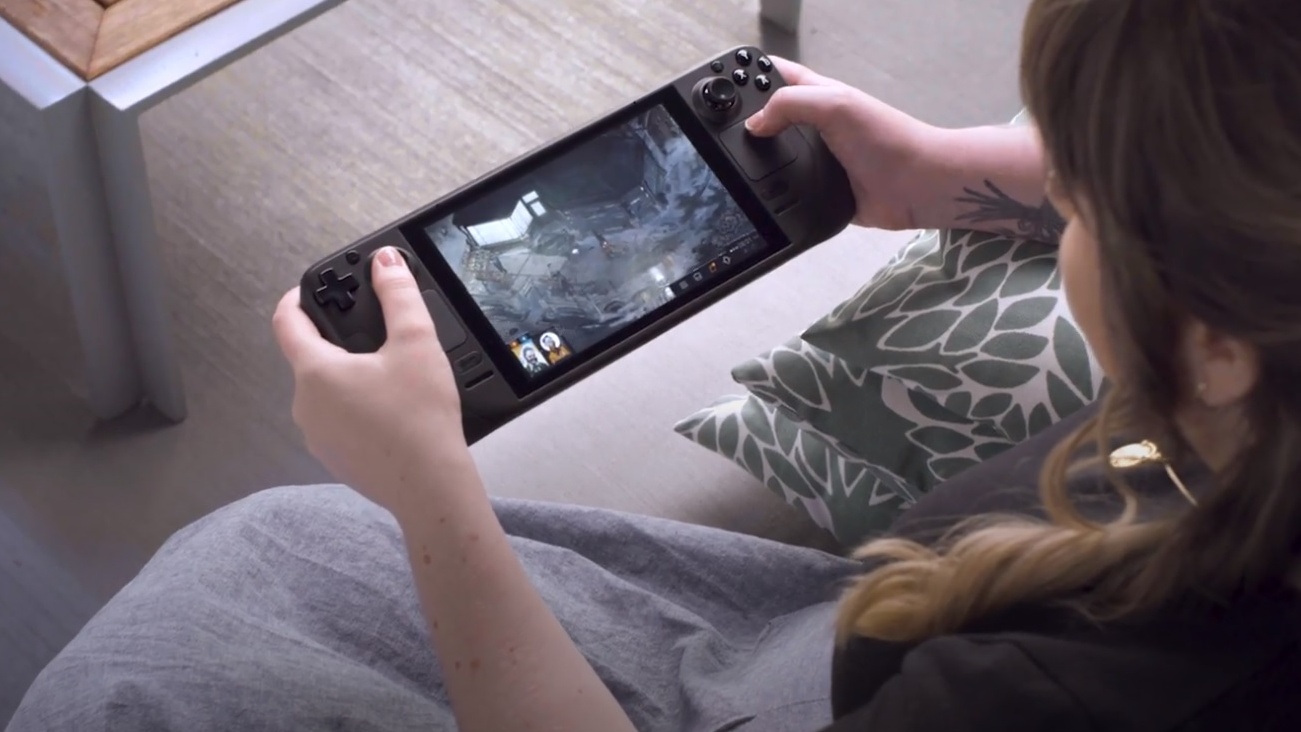GPD Win Max 2 price unveiled — is it better than the Steam Deck?
Game with this at work! Your boss won't suspect a thing

The GPD Win Max 2 is stealing the Steam Deck's spotlight as gamers seek handheld devices that can run their favorite triple-A titles. The ultra-tiny gaming laptop already has an edge over the Valve console: you don't have to pay $5 to hop on a waiting list to purchase it.
You may be wondering, "What's the GPD Win Max 2's price?" There's a limited edition model for $899, but the regular base variant costs $999. If you max out the specs, you'll have to shell out $1,299. Conversely, the Steam Deck starts at $399 while the maxed-out model costs $649.00. So what does this mighty mite of a gaming laptop have to offer over the Steam Deck? Let's find out.
Is the GPD Win Max 2 better than the Steam Deck?
If you're wondering whether you should snag the GPD Win Max 2 or the Steam Deck, it depends on what you're looking for. The Win Max 2 isn't necessarily marketed as a handheld console — GPD boasts that it's a laptop that doubles as a gaming machine. In fact, the Win Max 2 features two magnetic covers that can hide its embedded controllers, so you can game secretly while you're at the office.
If you're looking for a hybrid device that can facilitate your productivity while also allowing you to game on your off days, the GPD Win Max 2 may be a better fit. After all, a proper laptop needs ports, and the Win Max 2 has a nice mix of them, including HDMI 2.1, USB Type-C and USB Type-A ports. Its screen is also stylus-compatible, which may appeal to casual artists. However, if you want a comfortable, handheld console that you can play with for hours at a time, the Steam Deck is your best bet.
I can't speak for the Steam Deck's performance (we're still waiting for our unit so we can test it), but I can discuss its design as I got a chance to play Cyberpunk 2077 on the 256GB model ($529). One glaring setback the Steam Deck has compared to the GPD Win Max 2 is its thick bezels and small display. The Steam Deck sports a 7-inch, 1280 x 800-pixel LCD touchscreen. The GPD Win Max 2, on the other hand, comes with a 10.1-inch panel with ultra-thin bezels, which means it has far more screen real estate than its Valve counterpart.

The Steam Deck feels absolutely divine in my hands. The thumbsticks are sturdy, yet flexible. The controls are placed where the thumb rests naturally, and I never felt that the buttons — nor the tiny touchpads — were out of reach.
The graphics on the Steam Deck are OK (the device runs on a custom AMD Zen 2 "Van Gogh" APU). They didn't blow me away, but I didn't expect them to. The GPD Win Max 2 offers two integrated graphics options: Intel Iris Xe graphics and the AMD Radeon 680M GPU. Can they render triple-A graphics well? I'm not convinced, but we'll have to put it to the test in our lab before rendering a final judgment on their gaming prowess.
Sign up to receive The Snapshot, a free special dispatch from Laptop Mag, in your inbox.
Outlook
My greatest concern with the GPD Win Max 2 is the keyboard potentially getting in the way. Interestingly, however, GPD pointed out that the Win Max 2's deck is slightly narrower than the Steam Deck. The latter is 11.7 inches wide while the former has a width of 8.9 inches.
As mentioned, once we get the Steam Deck and the GPD Win Max 2 in our lab, we'll test these bad boys out and put them through a brutal face-off to determine which handheld gaming device reigns supreme in graphics, gaming performance, and more.
As of this writing, GPD is crowdfunding the production of the Win Max 2 on Indiegogo to raise $20,000. Given that the original GPD WIN Max raised nearly $3 million back in 2020, we don't think they'll have any trouble clearing that hurdle.
Kimberly Gedeon, holding a Master's degree in International Journalism, launched her career as a journalist for MadameNoire's business beat in 2013. She loved translating stuffy stories about the economy, personal finance and investing into digestible, easy-to-understand, entertaining stories for young women of color. During her time on the business beat, she discovered her passion for tech as she dove into articles about tech entrepreneurship, the Consumer Electronics Show (CES) and the latest tablets. After eight years of freelancing, dabbling in a myriad of beats, she's finally found a home at Laptop Mag that accepts her as the crypto-addicted, virtual reality-loving, investing-focused, tech-fascinated nerd she is. Woot!

